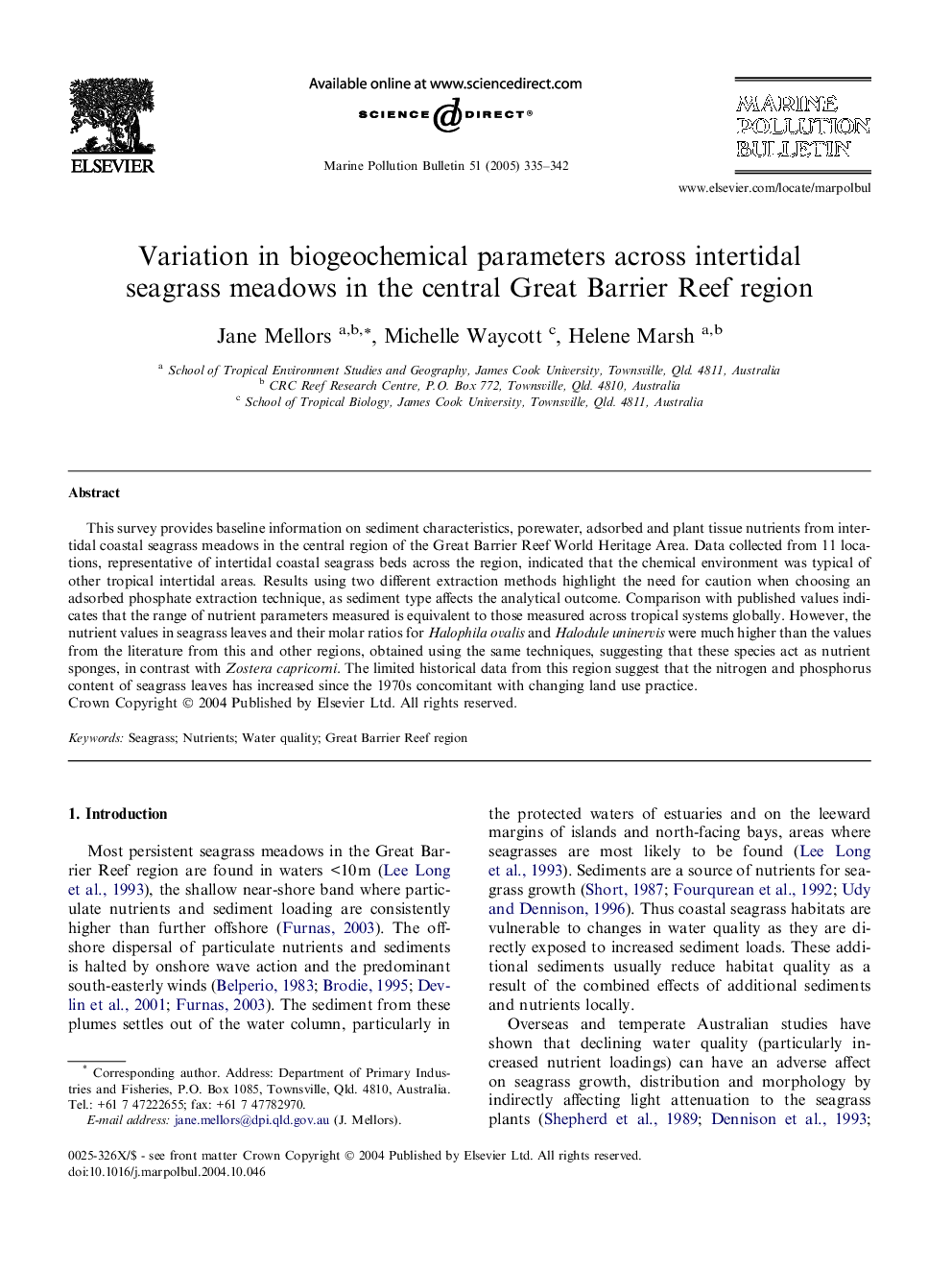| Article ID | Journal | Published Year | Pages | File Type |
|---|---|---|---|---|
| 9465888 | Marine Pollution Bulletin | 2005 | 8 Pages |
Abstract
This survey provides baseline information on sediment characteristics, porewater, adsorbed and plant tissue nutrients from intertidal coastal seagrass meadows in the central region of the Great Barrier Reef World Heritage Area. Data collected from 11 locations, representative of intertidal coastal seagrass beds across the region, indicated that the chemical environment was typical of other tropical intertidal areas. Results using two different extraction methods highlight the need for caution when choosing an adsorbed phosphate extraction technique, as sediment type affects the analytical outcome. Comparison with published values indicates that the range of nutrient parameters measured is equivalent to those measured across tropical systems globally. However, the nutrient values in seagrass leaves and their molar ratios for Halophila ovalis and Halodule uninervis were much higher than the values from the literature from this and other regions, obtained using the same techniques, suggesting that these species act as nutrient sponges, in contrast with Zostera capricorni. The limited historical data from this region suggest that the nitrogen and phosphorus content of seagrass leaves has increased since the 1970s concomitant with changing land use practice.
Keywords
Related Topics
Physical Sciences and Engineering
Earth and Planetary Sciences
Oceanography
Authors
Jane Mellors, Michelle Waycott, Helene Marsh,
